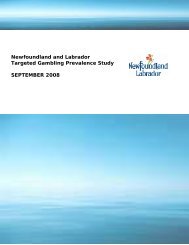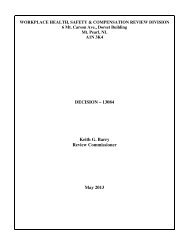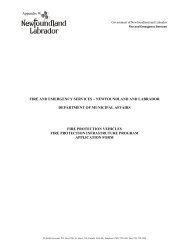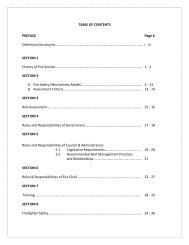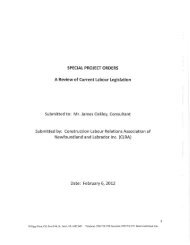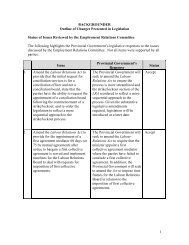Basic Level Pre-Course Reading
Basic Level Pre-Course Reading
Basic Level Pre-Course Reading
Create successful ePaper yourself
Turn your PDF publications into a flip-book with our unique Google optimized e-Paper software.
Annex A: Answers to Review Questions<br />
2. The major difference between exposure to chemical agents and to biological<br />
agents is:<br />
a) Biological agents can cause death within minutes of exposure whereas chemical<br />
agents can take days or weeks.<br />
b) Chemical agents can cause death within minutes of exposure whereas with<br />
biological agents it is often days or weeks.<br />
c) A large amount of chemical agent is required to affect a large number of<br />
casualties, whereas only a small amount of biological agent is required.<br />
d) None of the above.<br />
3. Ionizing radiation:<br />
a) Can be naturally occurring or manufactured<br />
b) Is undetectable by human senses<br />
c) Can cause symptoms to appear anywhere from minutes to decades<br />
d) All of the above<br />
4. Name some of the indicators that would lead you to be suspicious of a<br />
package.<br />
Looks wrong, feels wrong, other indicators. See Section 3.4.1 for more information.<br />
5. What are the actions you should take immediately upon locating a suspicious<br />
package?<br />
Manage the package, secure the scene, manage affected persons, and request<br />
additional resources. See Section 3.4.2 for more information.<br />
Chapter 4 - Personal Protection<br />
1. Is it possible for fire-fighters in bunker gear to engage in rescue operations<br />
during a CBRN incident? Explain.<br />
These types of risk versus benefit decisions are dependent upon the particular<br />
circumstances of each CBRN incident. It is important to note that the information<br />
pertaining to the ECBC IRP Risk Assessment is presented ONLY to provide<br />
technical and operational guidance for those who choose to perform quick, initial<br />
rescue in the absence of higher levels of PPE. This information is, in no way,<br />
intended to serve as a recommended standard. See Sections 4.4.5 and 4.5 for more<br />
information.<br />
Note: In the absence of any information about the nature of the threat, <strong>Level</strong> A PPE<br />
offers the best protection.<br />
CBRN First Responder Training Program<br />
66<br />
<strong>Basic</strong> <strong>Level</strong> <strong>Course</strong>






